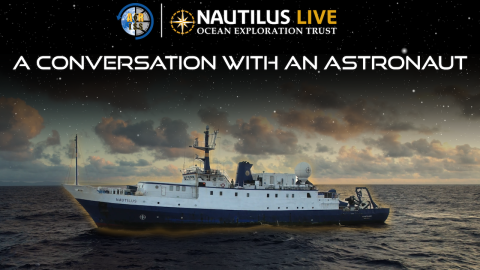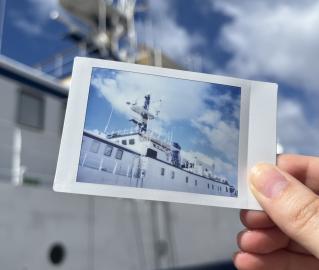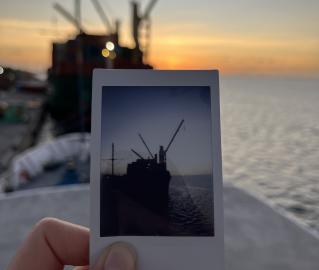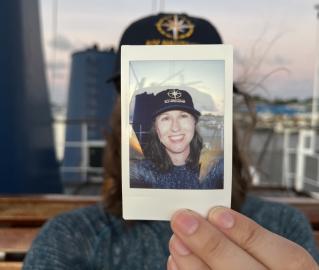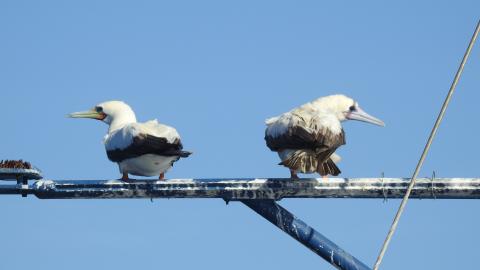Meet Ocean Explorer Diego Johansen
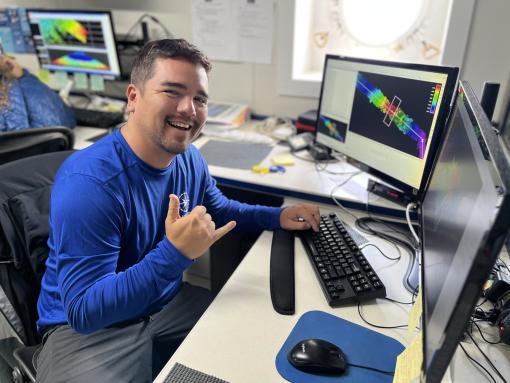
Describe your role with OET.
As a seafloor mapping & hydrology intern on the mapping expedition around Howland & Baker Islands, I play a hands-on role in charting a remote area of the ocean that is largely unexplored. As part of the mapping team, I assist with collecting and processing sonar and sub-bottom profiler data, cleaning data for raw seafloor maps, and deploying XBT’s to improve accuracy. I help transform thousands of sonar pings into high-resolution maps that guide future ROV dives and reveal epic deep-sea habitats, such as seamounts, ridges, canyons, vents, and other features of interest. Additionally, I participate in educational outreach via live broadcasts with groups from around the world.
Can you tell us a little about your background? What influenced you as a child?
I grew up in Pasadena, California, where much of my childhood was spent outdoors—hiking local trails, exploring new places, and spending time at the beach. I was always curious about the natural world, and visits to aquariums and museums only deepened that fascination. Those early experiences sparked a love for the earth and its animals, shaping my passion for science and exploration. Even now, I still find joy in those same activities—and I’ve been fortunate to shape both my career and lifestyle around them.
When you were a kid, what did you want to be when you grew up?
There were two dreams that stood out: becoming a firefighter or a marine biologist. After high school, I pursued the first path and earned an AA in Fire Science and Technology. Over time, I realized it wasn’t quite the direction I wanted to follow, and life eventually brought me to Hawaiʻi, where I completed a B.S. in Marine Science (Shoutout UH Hilo!). While I don’t strictly call myself a biologist, my work and interests lean more toward oceanography—which is pretty close! It’s been a journey, but one that reminds me: always follow your dreams.
What would you consider to be your greatest challenge entering this field?
One of my biggest challenges was during my time at UH Hilo. The coursework was rigorous, and the professors pushed us to go beyond our comfort zones. Balancing calculus, physics, and organic chemistry alongside marine science classes was demanding on its own — but doing it while working multiple jobs to make ends meet in Hawai’i made time management especially tough. It was a constant juggling act, but ultimately it taught me perseverance and how to stay focused under pressure. I lost track of how many all nighters that I pulled.
At the same time, I was fortunate to find incredible opportunities along the way. I was able to attend conferences, gain hands-on fieldwork experience while still in school, and participate in internships and advanced trainings that are helping shape my career path. Those challenges were tough but they opened the door to growth and opportunities I’m truly grateful for.
Do you have any advice for someone looking to follow a similar path?
My biggest piece of advice is to go after opportunities that spark your interest — even if they feel like a long shot. You never know what might come from putting yourself out there. Just as important, don’t be afraid to talk about your passions. Networking can be incredibly powerful, and when you share what excites you, people often connect you with others in those specialties. That’s how doors open and new paths begin to unfold.
What's next for your ocean studies and career?
I recently completed specialized training in deep-sea research with the Ocean Discovery League, which gave me the opportunity to explore new approaches for using emerging technologies in the field. Building on that, I’m currently developing a research project on a submarine volcano off Hawai’i Island, where I can apply and expand my skills in seafloor exploration. I’m passionate about advancing the use of marine technology, so I plan to continue working with ROVs and USVs while gaining deeper technical expertise. Looking ahead, I hope to return to E/V Nautilus with the OET team and contribute to future expeditions that push the boundaries of ocean discovery and conservation.
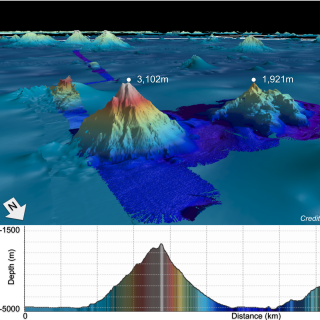
Seafloor Mapping Offshore Howland & Baker Islands
During this expedition, E/V Nautilus explores the waters offshore Howland & Baker Islands. Located roughly midway between Hawaiʻi and New Zealand in the Central Pacific Ocean, the islands of Howland and Baker are some of the most isolated land masses on Earth.
